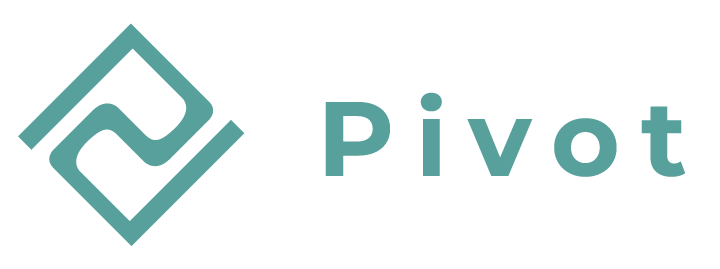In today’s digital-first world, any business’s online presence is a vital component of its marketing strategy and more often than not the first chance to communicate with potential customers. The right website design company can transform an idea into a useful online utility, but with so many options comes the question: what to look for when hiring a website design company?
Identify Your Website’s Needs and Goals
Before you start looking for a web design agency, taking the time to clearly define your website’s objectives is a critical first step. Whether you’re launching a new website or revamping an existing one, understanding its primary function and what you hope to achieve will help immensely in partnering with the right web design company. Here are some of the many different website designs that accomplish some common business goals:
Generate Online Sales
- E-commerce Site: If your goal is to sell products or services directly through your website, you’ll need an e-commerce platform that’s secure, user-friendly, and optimized for conversions. This includes features like:
- Product pages with detailed descriptions and images.
- An intuitive shopping cart and checkout process.
- Secure payment gateways.
- Web hosting solutions that support high traffic volumes and online sales.
- (Optional) Online inventory management solutions (ie: WooCommerce for WordPress)
Showcase Your Work or Portfolio
- Portfolio Website: Ideal for creatives, professionals, and businesses looking to display their work or projects. Key elements include:
- High quality galleries to present your work.
- Content management system (CMS) for easy content updates.
- User interface design that highlights your projects beautifully with the emphasis on the product(s).
Lead Generation
- Business Website: For businesses focusing on brand visibility and leads, a well-designed informational site is essential. It should feature:
- Clear, concise company information and what sets you apart.
- Content creation strategies that position you as an industry leader.
- Contact forms and call-to-action (CTA) buttons to generate leads.
- Integration with marketing strategy and social media for broader reach.
- (Optional) Integration with possible Paid Media platforms (ie: Google Ads).
Engage with Your Community or Readers
- Blog or Community Engagement Site: If your aim is to publish content regularly and engage with a community, consider:
- A dynamic blog post layout that encourages reading and sharing.
- Search engine optimization (SEO) best practices to increase search results visibility.
- Comment sections or forums to foster community discussion and engagement.
Streamline Operations with Internal Tools
- Custom Web Applications: For businesses looking to streamline internal operations or offer specific tools to customers, such as booking systems or interactive tools. Features might include:
- Custom software development to meet specific operational needs.
- Project management software integrations.
- User friendly design for ease of use by staff or customers.
Experience and Portfolio
Assessing the Portfolio
When starting the search for the right web design company, their portfolio is your first peek into the skills and expertise. Treat this as more than just flipping through a catalogue and keep these points in mind:
- Diversity of Projects: A good web design agency will have experience across a variety of industries. This shows adaptability and the ability to tailor web design solutions to specific business goals and different niches.
- Quality Over Quantity: Focus on the quality and thoughtfulness of the designs. Do they reflect a deep understanding of the target audience and user experience principles?
- Results: Seek portfolios that highlight the objectives and results of each project. For instance, how did a particular web design enhance online sales, generate leads, or improve search engine optimization?
- Technical Proficiency: Note the use of modern web development technologies and trends, such as mobile responsive designs and web accessibility features.
Leveraging Testimonials and Case Studies
Testimonials and case studies can highlight the truth about the web design agency’s approach to client relationships and project management. They reveal not just the end product but the process and collaboration that led there:
- Client Success Stories: Look for detailed accounts of how the agency addressed specific challenges and the business outcomes of their work.
- Collaboration and Communication: Testimonials can shed light on the company’s ability to work as part of a team, adapt to feedback, and maintain open lines of communication.
- Post Launch Support: Case studies that discuss ongoing maintenance, content management, and post-launch support can offer a behind the scenes look into the company’s commitment to long term client success.
Design Process and Collaboration
The Importance of a Defined Design Process
A transparent and well thought out design process is extremely important for the success of any web design project. It ensures that all parties are on the same page from the very beginning, setting clear expectations for milestones, deliverables, and timelines. Consider asking about the following steps in a potential partner’s process:
- Initial Consultation: How the web design company gathers your requirements and understands your business goals.
- Strategy and Planning: The phase where site structure, user interface, and content strategy are developed.
- Design and Development: Details on how the company moves from mockups to fully functional web designs.
- Testing and Launch: Understand the protocols for quality assurance, web accessibility, and preparation for going live.
- Post Launch Support: Clarification on ongoing maintenance, updates, and scalability options for future growth.
In-House vs. Outsourcing Web Development
Choosing between a web design agency with an in-house team and one that outsources is extremely important. For most projects, weight these factors when in your decision making process:
In-House Teams:
- Pros:
- Better communication and collaboration, leading to more cohesive web designs.
- Greater accountability and alignment with the company’s culture and business goals.
- Easier to manage changes and updates with a team fully invested in your project’s success.
- Cons:
- Potentially higher costs due to the comprehensive nature of services.
Outsourcing:
- Pros:
- Often more cost-effective, allowing for budget flexibility.
- Scalability to adjust the size of the development team based on project needs.
- Cons:
- Potential challenges with communication and time zone differences.
- Risks associated with consistency in quality and understanding of brand values.
SEO and Supporting Services
The Role of SEO in Web Design
In the digital ecosystem, the synergy between web design and Search Engine Optimization (SEO) is obvious. A beautifully designed website might catch the eye, but without incorporating SEO best practices, it may remain hidden from your desired audience. Expert web design companies prioritize SEO from the very beginning, and is often part of the initial framework design, content, and even its coding. This ensures that your website is not only aesthetically pleasing but also has to ability to rank well on search engines, making it more discoverable to your target audience.
Supporting Digital Marketing Services
While SEO is the backbone of your digital discoverability, there are many factors to take into account when measuring success. Web design companies that offer additional supporting services provide a more comprehensive strategy for success.
Graphic Design
- Branding: Cohesive and compelling graphic design strengthens your brand identity and creates a memorable user experience.
- Engagement: Professional visuals, infographics, and imagery can significantly increase user engagement and time spent on your site.
Content Creation
- Authority and Trust: High-quality and original content positions your brand as an authority in your field, building trust with your audience.
- SEO Benefits: Content optimized for keywords and search intent enhances your site’s SEO, improving visibility and driving organic traffic.
Social Media Integration
- Wider Reach: Integrating your website with social media platforms expands your reach, allowing you to engage with a broader audience.
- Increased Traffic: Effective social media marketing can drive more visitors to your site, supporting your overall digital marketing strategy.
PPC (Pay-Per-Click)
- Targeted Advertising: PPC campaigns offer a way to reach specific demographics quickly, complementing your organic SEO efforts.
Choosing a web design company that understands and implements a cohesive digital marketing strategy offers numerous advantages:
- Unified Messaging: Ensures consistent brand messaging across all digital platforms, strengthening your brand identity.
- Efficiency: Working with a single company for all your digital needs can streamline project management and improve coordination.
- Adaptability: A company familiar with multiple aspects of digital marketing can quickly adjust strategies based on performance data and market trends, keeping your online presence agile and effective.
Pricing and Value in Web Design Services
Wrapping your head around how web design pricing works can be challenging, yet it’s a critical step in choosing a great partner. Here’s how to assess the pricing and value offered by a web design company effectively:
Transparent Pricing Structures
Transparency in pricing is a must for any reputable web design agency. A professional and experienced company should:
- Detail Costs Upfront: Provide a clear breakdown of costs for the project’s scope, including design, development, and any additional services like SEO and content creation.
- Fixed Monthly or Yearly Costs: Fees like hosting, domain renewals or maintenance and security should also be presented and discussed with you so you’re not surprised come launch time when your website is live.
The Importance of Support and Maintenance in Web Design
After your website’s launch, the journey doesn’t end it begins a new phase where ongoing maintenance and support become sometimes even more important than the initial development.
Ensuring Website Health and Performance
Regular maintenance is 100% a necessity for keeping your site at peak performance. This involves:
- Routine Updates: Keeping your website’s content management system (CMS), plugins, and themes updated to ensure optimal performance and security.
- Performance Monitoring: Regularly checking your website’s loading speed, user interface (UI) efficiency, and mobile responsiveness to ensure a seamless user experience across all devices.
- Security Checks: Implementing and updating security measures to protect against vulnerabilities, hacking attempts, and malware.
Adapting to Changing Web Standards
Web development technologies, SEO best practices, and web accessibility guidelines are regularly changing. A great support team should help website adapt to these changes by:
- Incorporating Latest Trends: Updating your site with the latest web designs and functionalities to keep it fresh and engaging.
- SEO Adjustments: Continuously optimizing your site for search engines to maintain and improve your visibility and ranking.
- Accessibility & Compliance: Ensuring your website meets current web accessibility standards to provide an inclusive user experience.
Comprehensive Post-Launch Services
When selecting a web design company, consider their approach to post launch support. Services to inquire about include:
- Web Hosting: Reliable web hosting that offers fast loading times and minimal downtime is crucial for your site’s performance and visitor satisfaction.
- Software Development: For sites requiring custom functionality, ongoing software development support can address new needs, improvements, or steam lining certain processes.
- Technical Support: Access to skilled professionals for troubleshooting and technical assistance can save time and prevent frustrations.
Training and Resources
Beyond the technical aspects, the right design agency will also provide you with the tools and knowledge to manage your site’s basic needs:
- CMS Training: Guidance on how to use your content management system effectively for day-to-day website updates.
- Content Strategy Support: Assistance in developing an effective content strategy to keep your site relevant and engaging for your target audience – SEO training can also play a big factor here.
- Analytics and Reporting: Insights into your website’s performance through analytics, helping inform future content and marketing strategies.
Timeframe and Deadlines
Every web design process is unique, and so is the timeframe required to complete a new website. A good website design company might employ project management software and a dedicated project manager to keep the development process on track and ensure milestones are met. Discuss expected timelines early and understand how the agency handles delays to ensure your online business or online store launches successfully, without unnecessary stress.
Communication and Project Management
Clear communication and effective project management are the backbones of a successful web design project. Design teams that utilize project management software and maintain regular updates help keep everyone involved informed and engaged throughout the design process.
Technology and Tools
The technology and tools a web design company uses for building mobile responsive and mobile-friendly websites should be discussed before the start of your project. From content management systems for easy updates to graphic designers who bring visual concepts to life, the right technology stack can elevate your website from good to great. Ask about their capabilities in software development, keyword research, and content writing to get a sense of how equipped they are to handle your needs.
Scalability and Future Growth
Your new website should be a platform that supports online sales and generates leads for your successful business well into the future. It’s essential to partner with a web design agency that understands the importance of scalability. Discuss how your site can be future proof, and also handle improvements down the line, whether through adding landing pages, enhancing e-commerce functionalities, or updating the user interface for more visitors.
Contracts and Agreements with Your Web Design Company
A contract serves as the foundation of your relationship with a web design company. It’s a safe way to ensures both parties full understand the project expectations, responsibilities, and deliverables. Here’s what to pay close attention to when reviewing your contract:
Detailed Project Scope
- Services Provided: Ensure the contract specifies all services to be delivered, including web design, development, SEO services, graphic design, content creation, and any additional services.
- Deliverables: List all deliverables along with detailed descriptions to avoid ambiguity about what is expected upon project completion.
Delivery Timelines
- Project Milestones: Clear milestones should be established, indicating significant phases in the design process and their expected completion dates.
- Final Deadline: A concrete deadline for the project’s completion helps manage expectations and plan for the site’s launch.
Pricing and Payment Terms
- Cost Breakdown: The contract should clearly break down the costs associated with the project, including any fixed fees or hourly rates, including any applicable taxes.
- Payment Schedule: Understand when payments are due, particularly if they’re tied to project milestones or a specific timeline.
- Additional Costs: Any potential for extra costs, such as for design revisions or premium plugins should be clearly outlined.
Revision and Approval Process
- Design Revisions: The agreement should state how many rounds of revisions are included and what happens if additional revisions are needed.
- Approval Process: Define a clear process for approving work at various stages to keep the project moving forward without delays.
Content Creation and Ownership
- Content Provision: Clarify whether you need to provide content or if the agency will create it, and how the process will be managed.
- Intellectual Property Rights: Ensure the contract specifies who owns the website’s design, code, and any content created during the project.
Post Launch Support
- Maintenance and Updates: Outline the scope of ongoing maintenance and updates, including costs and how requests are handled.
- Warranty Period: A warranty period for addressing any issues after the site goes live can provide peace of mind and accountability.




